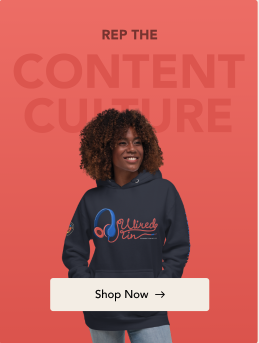Article's Content
Welcome to volume 42!
Podcasts have been popping off recently, and yes we’ve also hopped on the bandwagon.
Ross has been a long-time co-host on the Action Driven Podcast, I was recently featured on our internal culture-based podcast, and our ABM expert Kanaar Bell has been crushing it with Soul Talk.
Before we get into that, here’s a peek at what’s to come:
- Substack is expanding into the newsletter’s audio-based cousin: podcasts
- TikTok takes on the job search
- Taboola acquires a marketing technology company after going public last month
The Official Foundation Shop for all your Content Culture merch needs is open for business!
Make sure to follow us over on Twitter @FoundationIncCo and turn post notifications on so you don’t miss out on any giveaways 👀 ☕
Substack Supports Podcast Popularization
Substack struck gold with their newsletter subscription service, reaching a $650 million valuation in April 2021, and now they are moving into the audio realm of newsletters — podcasts.
According to the Content Marketing Institute, 31% of B2B marketers say email newsletters are the best for lead nurturing. Substack doesn’t want to isolate their existing community nor turn their focus away from newsletters, which is why the perfect solution is to pass on podcasting to a new team.
In a move to follow the rising trends of podcasting, Substack is funding the launch of a new podcast hosting platform, Booksmart. Two seasoned public radio journalists will launch this new platform; former producer Micheal Vuolo and Murrow Award winner Matthew Schwartz.
Similar to Substack’s revenue structure, Booksmart will only make money when the podcast does by taking a 10% cut of the subscription revenue. Hamish McKenzie of Substack confirmed the current success of Booksmart podcasts in an interview with Axios:
“We’re in the very early days of podcasting on Substack, but some podcasts are already making hundreds of thousands of dollars a year through the platform.”
On the current Substack website, independent newsletter creators can host and distribute podcasts/one-off audio episodes for free and distribute it by email, on the web, and all major podcast players — think Apple Music, Stitcher, Spotify, etc. As it stands, the podcasts hosted on Substack must accompany a newsletter.
So, with the current success, why expand and fund a new site?
Because Substack is committed to expanding independent podcast publishing on its platform. They see the Substack subscription structure as successful, and it will translate swimmingly into the podcasting business, leading to a great future for independent podcast networks.
Let’s look at the numbers that back up the rising popularity of podcasts. The Podcast Consumer and Edison Research provide the following stats from a 2019 survey of 1,500 people aged 12+:
- 71% say they listen for entertainment
- 74% say they listen to podcasts to learn new things
- 59% say they enjoy podcasts because they make them feel smarter
In 2021, 28% or 80 million Americans are weekly podcast listeners. That’s 10 million more listeners than Netflix account owners in America, indicating the start of a shift away from video and towards audio.
All this makes podcasts the perfect place to educate, engage, and entertain your audience base and guide their purchase decision through facts, foster community connections, and create genuine connections.
As for how many people listen to podcasts, according to Statista that number is approximately 162M Americans in 2021.
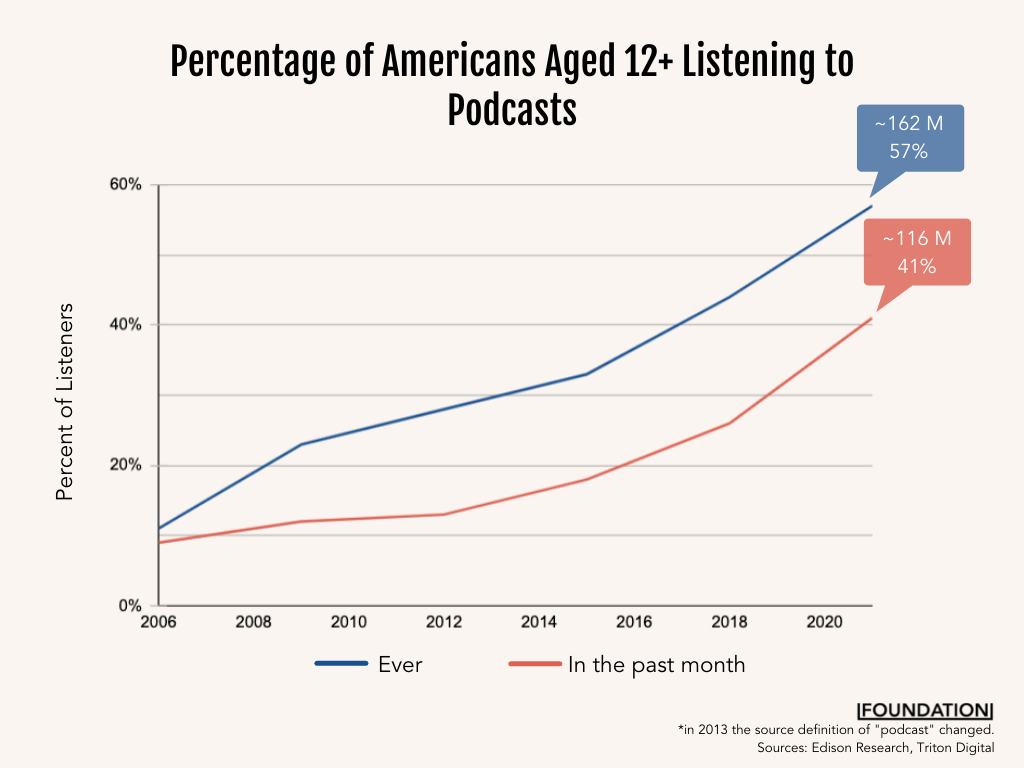
And my best guess is that this number will only rise as the world opens back up and we start to spend more time commuting.
Plus, what are podcasts if not newsletters for your ears?
Key Takeaways
- Podcasts are rising in popularity, and the trend will only continue as we come back to commuting.
- Substack’s newsletter subscription service has proven fruitful, and the structure is predicted to translate well to podcasts.
- When it comes to nurturing leads, newsletters are the go-to; when it comes to growing an engaged community, podcasting is the preferred medium.
Weekly B2B Newsletter
Subscribe to gain exclusive access to the latest B2B, tech, SaaS, and content marketing insights! Coming directly to your inbox twice a week.
TikTok Tackles Recruitment
TikTok has become a household name in just a year. With 2.6 billion downloads worldwide recorded in December 2020 — there is a good chance this app is or used to be on your phone.
And no, this isn’t just for Generation Z teenagers. As of March 2021, 10-19 year olds represent the majority of users (25%), but the 20-29 and 30-39 aren’t far behind making up 22% and 21% of the user base, respectively.
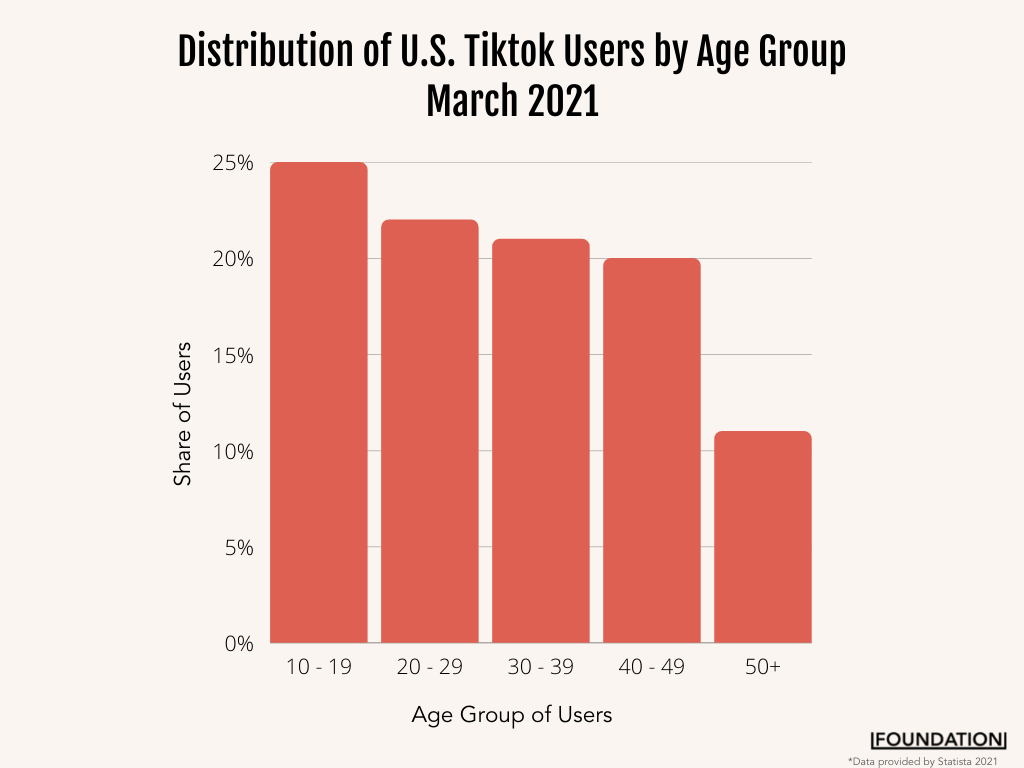
This age range is important to note because it shows us that most users on TikTok are within the job-seeking range. (Yes, you can look for employment at any age.)
We have all been awed by a creative, over-the-top, and out-of-the-box resume/job application. But how many times have you seen a video resume, been handed a TikTok link as someone’s CV? Probably never. But now, TikTok is taking advantage of this age range and their unique job-searching needs by moving into the world of HR.
Just as TikTok became a household name, it’s about to become a meeting room name, as ‘TikTok Resumes’ is piloted through this month. Some of TikToks pilot program partners are Chipotle, Target, WWE, Alo Yoga, Shopify, Contra, and Movers+Shakers.
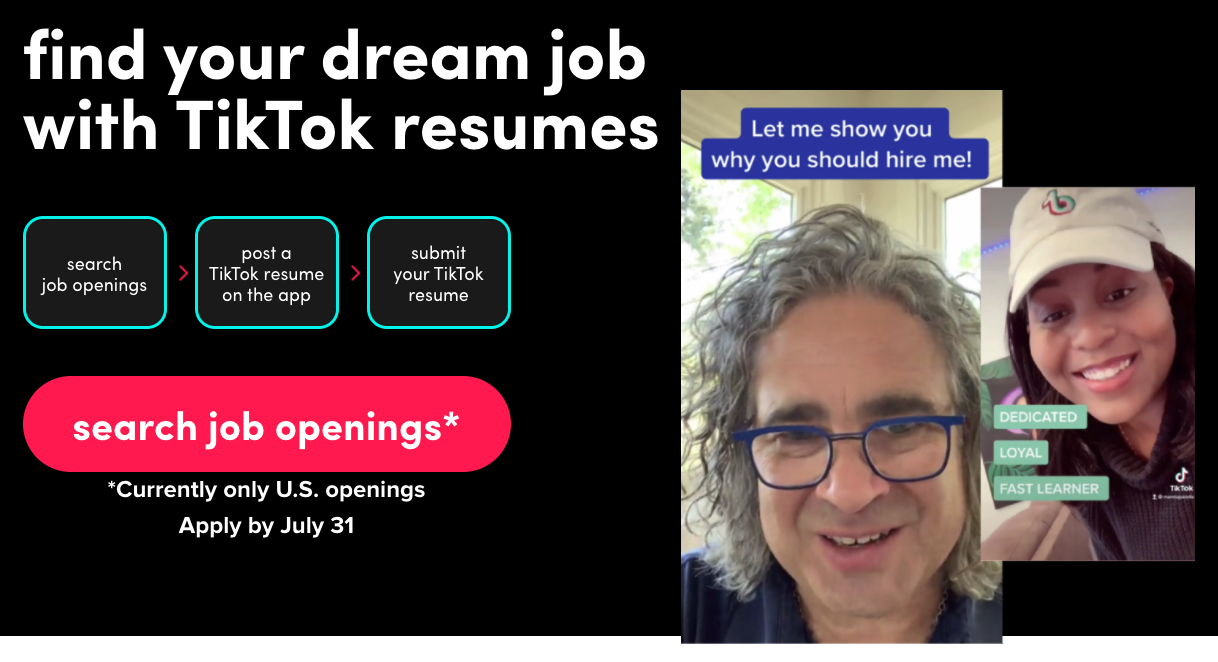
TikTok sees this as a natural fit for the brand since the goal of the platform is to show off your most authentic version of yourself.
All you have to do is upload a video introducing yourself (refraining from releasing any personal information), describe what you’re looking for, and sell yourself in 30 seconds or less. Simply attach the #TikTokresumes hashtag to your submission, and companies will scroll through all the applications and contact their chosen talent. Or you can visit tiktokresumes.com to access a major job board and apply with your video resume.
Now, as easy as that sounds, will it be well received?
According to Tallo and a survey of 1,200 Generation Zs, only 8% felt comfortable with potential employers contacting them via personal social media platforms vs. the 45% who want to be contacted on professional platforms ( e.g. LinkedIn).
These numbers haven’t swayed experiments in the past. McDonald’s received 3,000 “Snaplications” in 24 hours through its partnership with Snapchat in 2017.
While we are talking about numbers, let’s do some quick math here:
2.6 billion users on TikTok x the 25% who are Generation Z = 650M Gen Z users on TikTok
650M Gen Z users x the 8% willing to be contacted for employment = 52M Gen Z users open to job offers on a personal platform
52M Gen Z users are open to professionals contacting them through personal social media platforms. That number only grows as you open it to the millennial users – who, I’d assume, are more open to this type of engagement.
This is a neat expansion of the ever-evolving use cases of social media, and also TikTok’s video platform in general. With the decreasing use of job boards, it’s time we get with the times, brush up on our elevator pitches, and check out #TikTokresumes for your next hire.
Key Takeaways
- TikTok is expanding its use cases into the world of HR with video-based resumes.
- Job boards are out, and social media is in for hiring and connecting with potential candidates.
- Take inspiration from TikTok by taking inventory of who your audience is and how your brand is positioned to see where you else can stretch your service offerings to.
Taboola x Connexity To Take On The Growth of Ecommerce
Taboola runs a very successful public advertising company, best known for their (spammy) thumbnail grid ads featured on many online news articles under the headers “Around The Web” and “Recommended From The Web.”
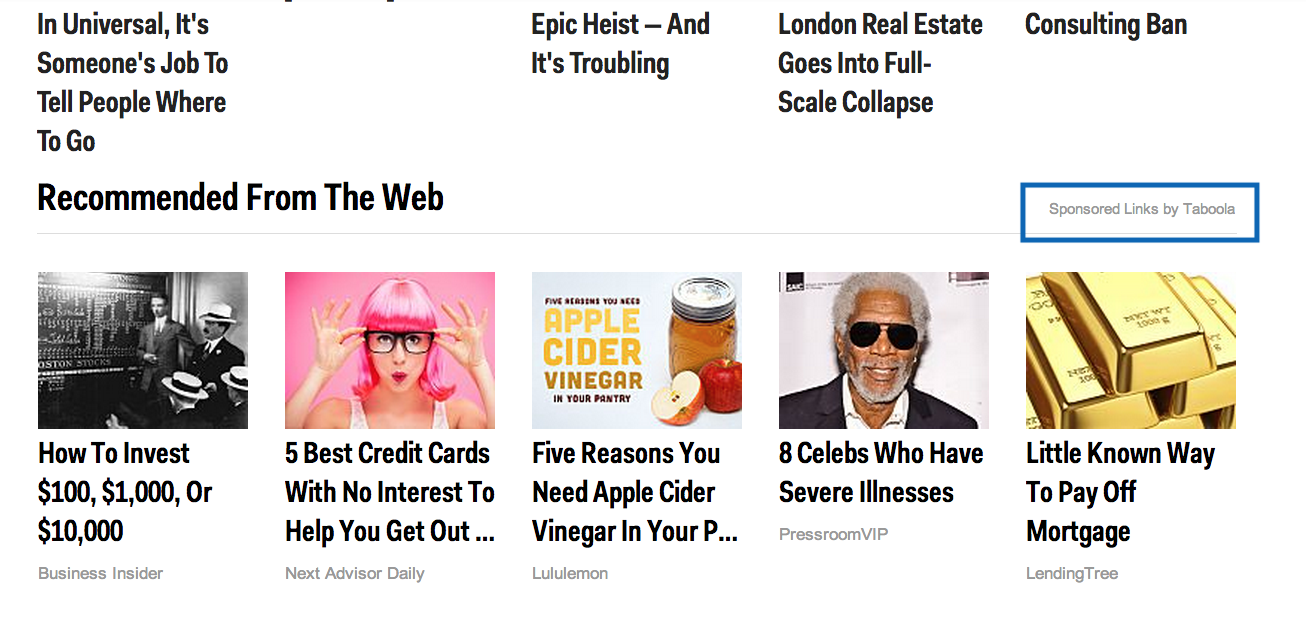
Taboola is valued at $1.9B according to Google Finance, but they say it’s closer to $2.35B — because Google’s share count is off…
At the time of their June 2021 SPAC, Taboola had:
- 9,000 digital partners
- 13,000 direct advertisers
- 500 million daily active users on its platform
It’s a fairly popular choice for digital advertisers, and their main competitor, Outbrain, was almost a partner as they were set to merge operations but decided against it by the time both companies made their public debuts in July 2021.
To remain competitive and expand further into the ecommerce world, Taboola spent $800M in a cash stock split to acquire Connexity, a marketing technology company operating a retail and ecommerce focused advertising network.
Connexity has a strong customer base with:
- 1,600 direct merchants
- 750 million product offers
- An audience of 100M shoppers
- 40,000 retail oriented publishers
Ecommerce has been and will continue to be a rising trend as we get ever more comfortable purchasing and returning goods online. Adam Singolda, the CEO and co-founder of Taboola, believes that the future of the web is ecommerce and notes that:
“Sixty-two percent of U.S. publishers expect ecommerce to be one of their biggest revenue channels, I strongly believe every publisher’s leadership these days have ecommerce as a top-three thing they want to get into in a big way.”
However, as it rises in popularity, the difficulty of online marketing is also rising—especially with the removal of third-party cookies. Therefore, an advertising company bringing publisher connections, and an ecommerce-focused marketing technology company, will make the perfect pairing to thrive in an ecommerce world.
Key Takeaways
- Acquisitions are the best way to expand into spaces that you don’t have expertise in.
- Ecommerce is the future for the web, and Taboola sees that the best way to remain relevant is to support their publisher partnerships with an ecommerce marketing expert.
- An advertising company and an ecommerce-focused marketing technology company walk into a bar acquisition, something something, a force to be reckoned with for the future of ecommerce advertising.
OTHER NEWS OF THE WEEK:
💷 Untitled Ventures is investing $118M in the Russian and Eastern European startup market, focusing on B2B, AI, agritech, medtech, robotics, and data management.
🏦 Paystand uses a mix of cloud technology and the Ethereum blockchain to support its cashless, fee-free B2B “Venmo” payment service, which raised $50M in Series C Funding.
💻Open-source framework creator Serverless Stack raised $1M in seed funding, as it emerges from Y Combinator’s 2021 winners batch.
BRAIN FOOD OF THE WEEK:
Every year Google, like Apple, hosts an extraordinary keynote session to describe the innovations that are underway and the product updates that are rolling out.
This year’s 2-hour long Google I/O session was hosted virtually but was no less extravagant. They discussed everything from personalized colour palettes on Android to my favourite innovation, Project Starline.
Sadly, I didn’t catch the show but I did catch the roundup of the announcements, which I want to share with you.
TWITTER THREAD OF THE WEEK:
Twitter Trails Downvotes by Twitter Support
WHAT WE’RE WIRED INTO THIS WEEK 🎧:
Afterparty by CHANCE デラソウル (Best Track: Want To Be Free)
Originally sent out, by me Cali B, on Thursday, July 29, 2021.
Stay up to date with all of our latest findings by subscribing to our newsletter today. Signing up also gives you early access to Ross’ Tuesday essay full of exclusive industry insights.
Quick, do it now before the next drop!







